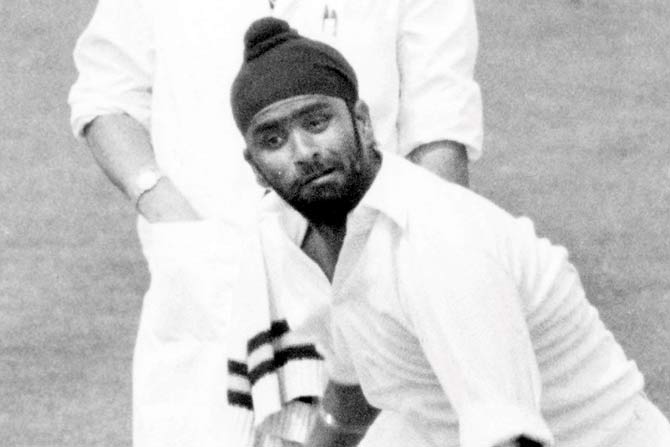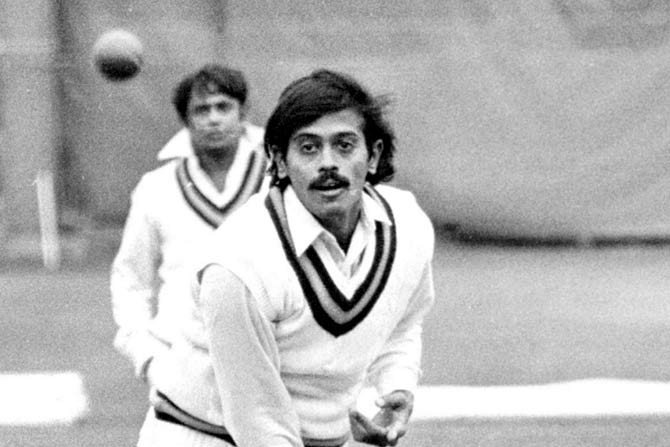Challenging the position of batsmen as cricket's stars, in his new book, Anindya Dutta celebrates the spin bowlers of India who tricked batsmen with the magic of the wrists and fingers

Anindya Dutta
It was in 1969, when right-hand Australian batsman Ian Chappell first faced Indian spin bowler Erapalli Prasanna. That ball would mark a "lifelong quest" to beat Prasanna to his game. Some years later, on getting to know his Indian counterpart better, Chappell teased him saying, "You little b*****d. You've got a string tied to that ball and just as I'm about to get to the pitch of the delivery, you tug on the string."
ADVERTISEMENT
This is just one of many vignettes on India's humdinger of a spin attack in cricket buff Anindya Dutta's new book, Wizards: The Story of Indian Spin Bowling (Westland, Sports). "Of all the bowling arts, high-quality spin is the most difficult to master. To a batsman facing a top-notch spinner, it can almost feel like magic when the ball does something completely different from what he expects," shares Dutta, of why a great batsman like Chappell was threatened.

Bishan Singh Bedi
That's also the reason Dutta, a banker, turned author. Where batsmen are elevated to the status of gods, the geniuses behind spin rarely get their due. The fabled Spin Quartet—Bishan Singh Bedi Bedi, Bhagwat Chandrashekar, Srinivasaraghavan Venkataraghavan and Prasanna—ruled the wave for nearly 17 long years, he says in the book. Yet, it's the tricks with the willow that smashed their way into everyone's memory. "But, if the quartet did not take wickets, Sunil Gavaskar's batting would not have won us matches. If Anil Kumble did not decimate Pakistan, all of [Sachin] Tendulkar's efforts would have gone in vain. If Ravichandran Ashwin and Ravindra Jadeja do not take wickets, Virat Kohli's double centuries will be to no avail," says Singapore-based Dutta over email.
The book, which took 18 months of research and writing, takes the reader through the 120-year-old history of Indian spin, beginning in the late 19th century with left-arm spinner Palwankar Baloo, who was born to a family of chamars or leather craftsmen in Dharwad. Baloo worked as a groundsman on the Parsi Cricket Club in Pune, then Poona, when he was spotted by English cricketer Captain John Glennie ('Jungly') Greig. By 1897, at the age of 22, Baloo had moved to Bombay, and joined the PJ Hindu Gymkhana. "Baloo's story is as much about cricket as [about] our society. His performance on the 1911 tour of England was staggering. While he was already known in India, his 114 wickets overall at 18.84, and the almost six first-class wickets a match is the highest any Indian bowler (not just spinner) has ever taken in England on a single tour till date. Baloo's bowling on that tour made the world take Indian spin bowling seriously for the first time," says Dutta.

An important moment in the history of the sport and the country occurred in 1920, during the Quadrangular, a tournament held in Bombay from 1912 to 1936, when the Hindus played the Parsis and captain MD Pai left the field and allowed Baloo to captain the side. "An untouchable was captaining a Hindu side at a time when Mahatma Gandhi had not yet started his campaign for the downtrodden," he adds.
Another spinner who finds mention in the book is Shivaji Park boy Subhashchandra Gupte. His cricketing career suffered an abrupt end when he was unceremoniously dropped from the team, following a controversy over his roommate calling a female staffer into their hotel room. "Gupte by all accounts, and confirmed by the many cricketers I spoke to who have played with and against him, was a true wizard with his leg-spin. I can only go with Prasanna's view when he told me that Gupte could have even taken 800 wickets if he had been allowed to have a full career. What happened to him was the worst example of what Indian cricket administration of the past did to its players," says Dutta, who has dived into archives, pored over scorecards and tour reports to reconstruct the lives of the older spinners.
 Srinivasraghavan Venkatraghavan
Srinivasraghavan Venkatraghavan
Then there is Bedi, who Dutta says was "technically perfect as no spinner has ever been". Even Kapil Dev, who has written the foreword to this book, speaks admiringly of his former captain. "There were high class left-arm spinners in many teams and they took wickets by the dozens in first-class cricket, but could not displace Bedi from the Test team," shares Dev in the book. According to Dutta, Bedi had the ability to flight the ball and make it do things batsmen could not anticipate. "He did not mind batsmen taking chances against him and often applauded good shots. He knew that as long as the batsmen took chances, he could mentally outwit them, and ultimate victory would be his. This is a very powerful belief indeed," he says.
Dutta also writes about the "Lost Generation" of spinners, who, despite their enormous bowling talent, could not play for India, because the game was dominated by the unbeatable quartet. He talks about Padmakar Shivalkar and Rajinder Goel, who he believes could have "walked into any other team in the world at the time". "There just wasn't space in the Indian team."
 Bhagwat Chandrashekhar
Bhagwat Chandrashekhar
The writer is also in awe of the current crop of "wizards," who've picked up the baton of the spin legacy. "Yuzi Chahal is a thinking bowler in the mould of Prasanna and Doshi. I believe that he and Kuldeep [Yadav] will be the backbone of Indian spin for a long time. Kuldeep fills me with joy when I watch him bowl. No spinner has had that effect on me since Doshi in the early 1980s. I hope the next edition of my book will see a full chapter on his exploits."
Catch up on all the latest Mumbai news, crime news, current affairs, and also a complete guide on Mumbai from food to things to do and events across the city here. Also download the new mid-day Android and iOS apps to get latest updates
 Subscribe today by clicking the link and stay updated with the latest news!" Click here!
Subscribe today by clicking the link and stay updated with the latest news!" Click here!






